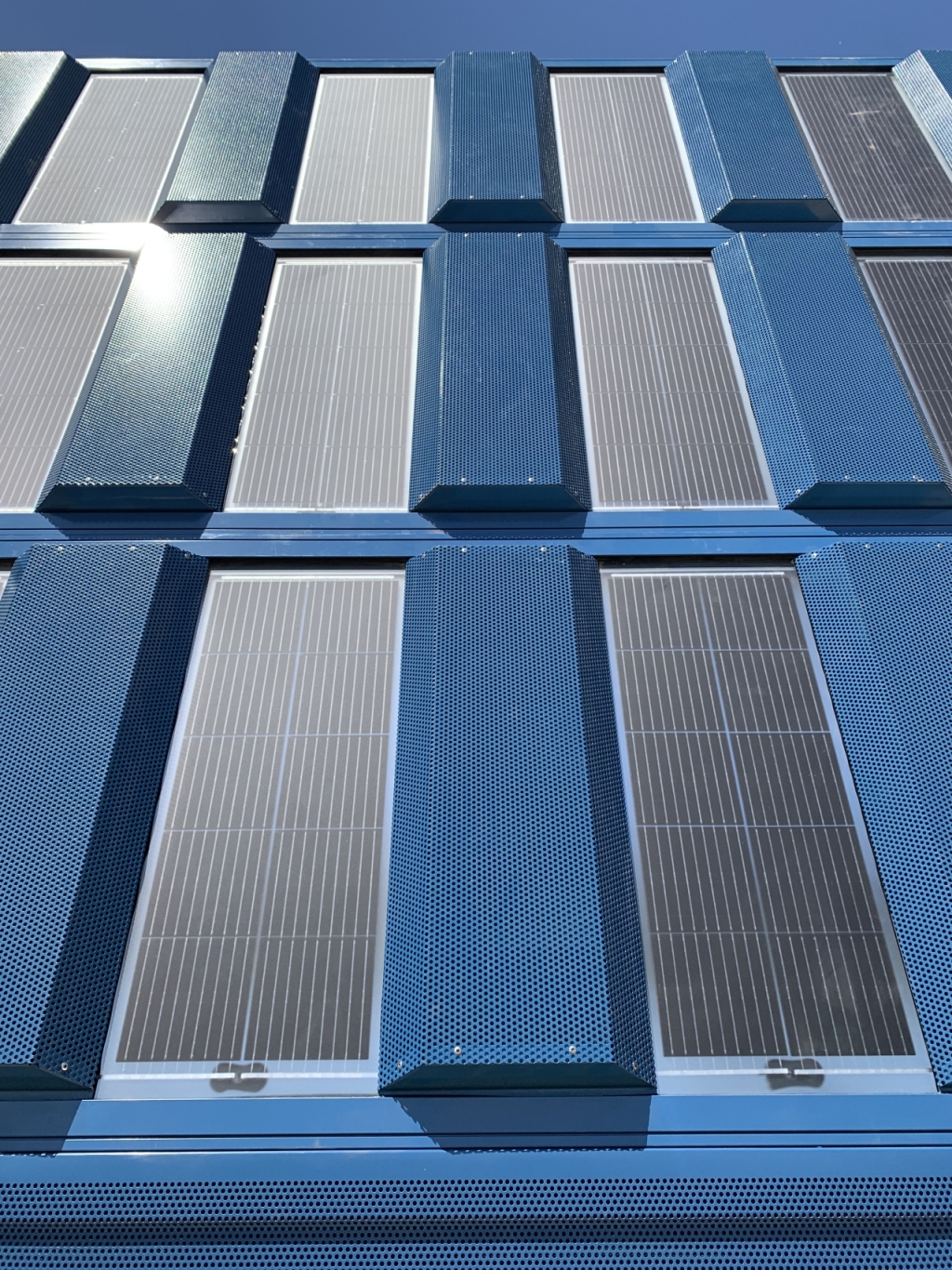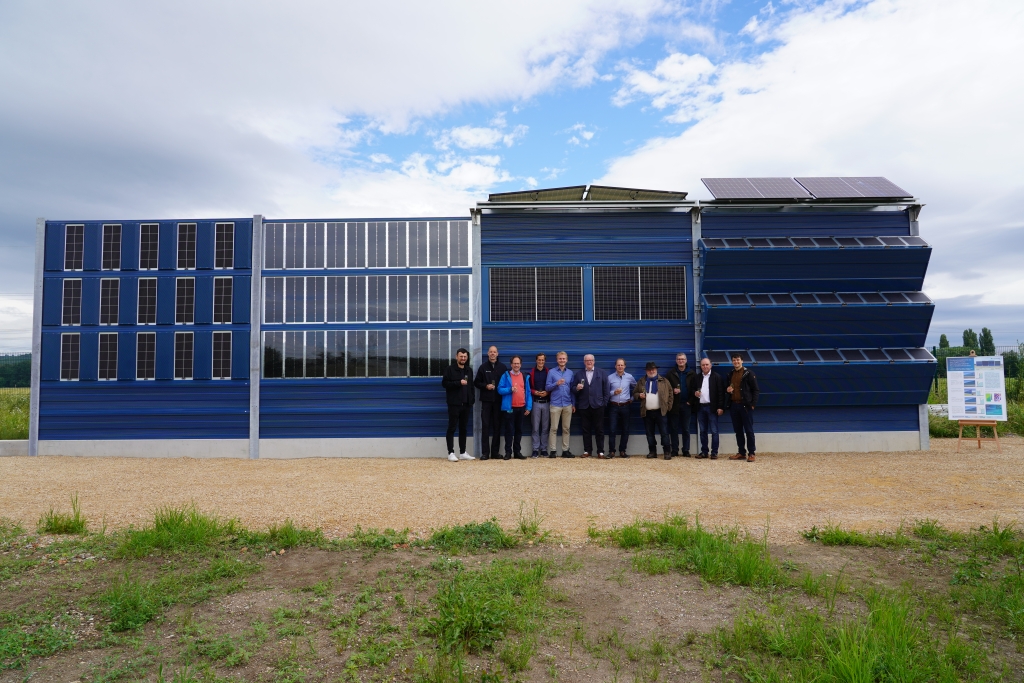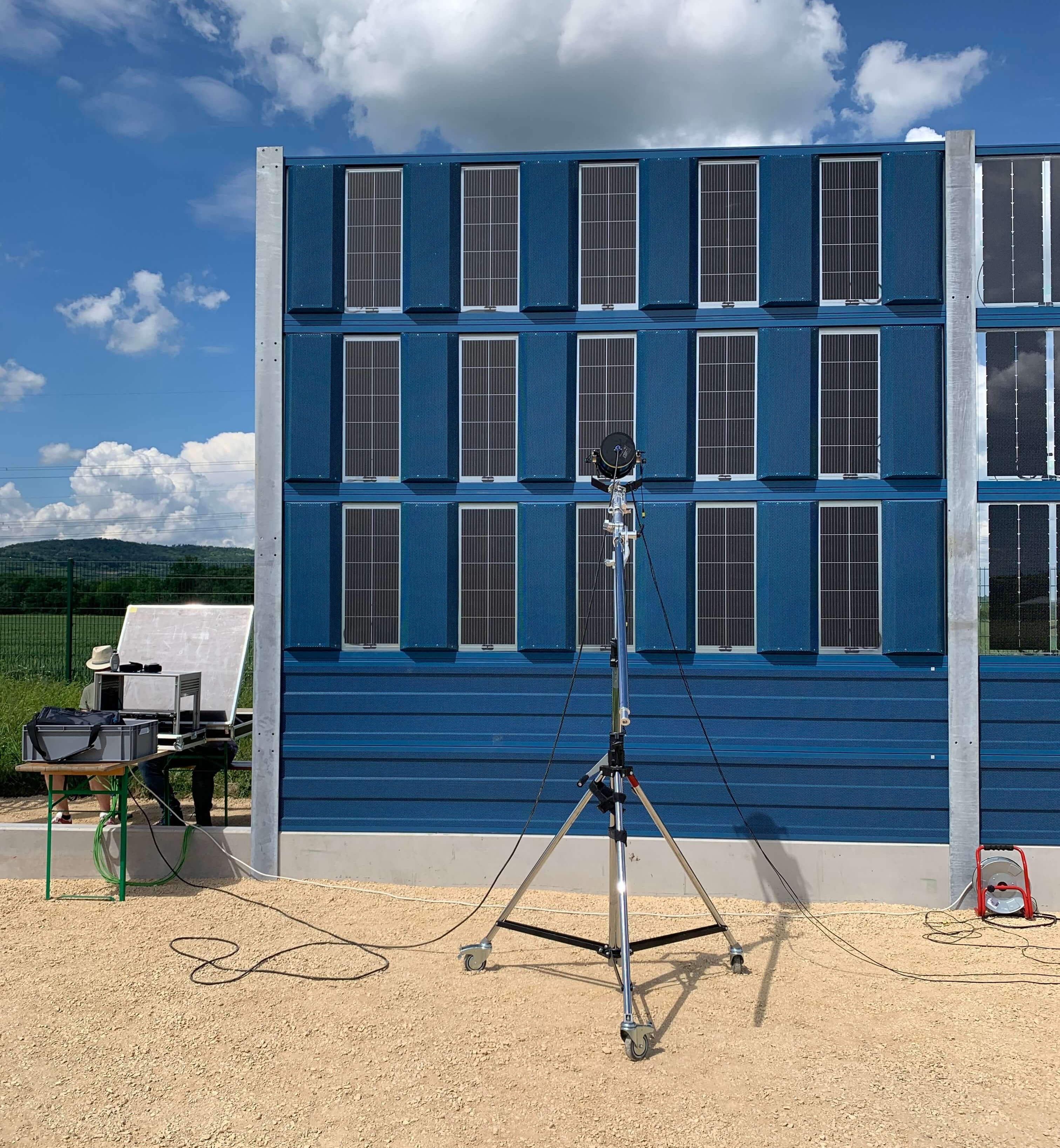| Duration: | 04/2020 - 06/2024 |
| Contracting Authority/ Sponsors: |
Federal Ministry of Economic Affairs and Climate Action (BMWK) |
| Project Partners: | R. Kohlhauer GmbH IGRA Power GmbH Megasol Energie AG Energiegenossenschaft Inn‐Salzach eG Bundesanstalt für Straßenwesen Deutsches Zentrum für Schienenverkehrsforschung des Eisenbahn‐Bundesamt |
| Project Focus: |
PVwins – Development of Wall-Integrated PV Elements for Noise Protection



PV electricity is indispensable to the success of the energy transition and installation capacities must be expanded. An aesthetically pleasing and space-saving way to increase PV capacity is to integrate the PV modules on built structures that already exist. In the PVwins project, special PV module panels are being developed for integration into noise barriers on roads and railways, on which the estimated technical potential in Germany is around 5 GW.
The project focuses on the development and testing of module concepts which can be integrated in noise barriers for absorbing and insulating noise. Concepts for the efficient and safe interconnection of such linear power plants are considered and feasible operator models are discussed. Considering the economics, the marketability of PV noise barriers will be investigated in a test project.
In the PVwins project, PV modules that can be installed on new barriers upon construction, during modifications or later as an add-on are being developed. The aim is to develop sound-absorbing PV module panels that can be used without additional noise absorbing elements. For applications requiring reflective noise protection, sound-absorbing bifacial PV module panels are to be developed which can be used in combination with noise barrier walls. The bifacial structure is intended to block sound through a high weight per unit area, with reflection playing a subordinate role. If the sound barrier already exists, concepts and systems are being developed to retrofit existing noise barriers with PV modules so that the noise protection is further ensured.
Development of module variants for several use cases
In the project, the complex regulatory requirements for noise barriers on roads and railways will be compiled. Plausible material classes and module designs will be pre-qualified for several applications. Furthermore, suitable manufacturing processes for the PV modules, prefabricated PV noise protection elements and retrofit solutions are investigated. The project team evaluates the options for the technical designs, produce module prototypes and measure the acoustic properties in the laboratory. The wall panels are optimized. Large modules are manufactured then characterized and tested with regard to performance, reliability and other specific requirements.
Another goal is to determine the yield potential of PV electricity, especially for bifacial modules. The project team localizes a test project to analyze the noise barriers quality. A reference and also one module design for each noise protection concept will be sampled, characterized, mounted and monitored. The product costs will be analyzed. The parties involved shall identify possible hurdles facing the implementation of solar noise barriers and identify methods for successful project development.